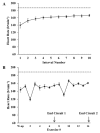Effect of an Acute Bout of Kettlebell Exercise on Glucose Tolerance in Sedentary Men: A Preliminary Study
- PMID: 27766136
- PMCID: PMC5065327
- DOI: 10.70252/XQJM4027
Effect of an Acute Bout of Kettlebell Exercise on Glucose Tolerance in Sedentary Men: A Preliminary Study
Abstract
Impaired glucose tolerance can have significant health consequences. The purposes of this preliminary study were to examine whether a single session of kettlebell exercise improves acute post-exercise glucose tolerance in sedentary individuals, and whether it was as effective as high-intensity interval running. Six sedentary male subjects underwent a two-hour oral glucose tolerance test following three different conditions: 1) control (no exercise); 2) kettlebell exercise (2 sets of 7 exercises, 15 repetitions per exercise with 30 seconds rest between each exercise); or 3) high-intensity interval running (10 one-minute intervals at a workload corresponding to 90% VO2max interspersed with one-minute active recovery periods). Blood glucose and insulin levels were measured before (0 minutes), and 60 and 120 minutes after glucose ingestion. Both kettlebell and high-intensity interval running exercise significantly lowered blood glucose 60 minutes after glucose ingestion compared with control. However, there was no significant difference in blood glucose between the two exercise conditions at any time point. In addition, there were no significant differences in insulin concentration between high intensity interval running, kettlebell, and control conditions at all time points. Results indicate that an acute bout of kettlebell exercise is as effective as high intensity interval running at improving glucose tolerance in sedentary young men.
Keywords: Insulin sensitivity; glycemic control; type 2 diabetes.
Figures





References
-
- ACSM. Guidlines for Exercise Testing and Prescription. 9 ed. Lippincott Williams & Wilkins; 2013.
-
- Andersen E, Hostmark AT. Effect of a single bout of resistance exercise on postprandial glucose and insulin response the next day in healthy, strength-trained men. J Strength Cond Res. 2007;21(2):487–91. - PubMed
LinkOut - more resources
Full Text Sources
